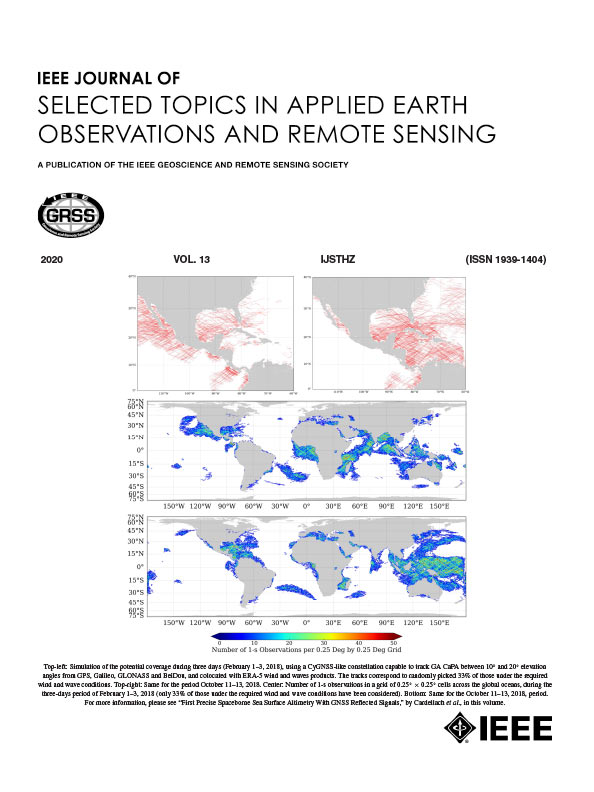Mapping the Spatiotemporal Patterns of Surface Mining in Resource-Based Cities and Assessing Their Impact on Land Surface Temperature Across the Urban–Rural Gradient
IF 5.3
2区 地球科学
Q1 ENGINEERING, ELECTRICAL & ELECTRONIC
IEEE Journal of Selected Topics in Applied Earth Observations and Remote Sensing
Pub Date : 2025-09-25
DOI:10.1109/JSTARS.2025.3614249
引用次数: 0
Abstract
Intensive mining activities in resource-based cities can significantly alter the local thermal environment. However, due to the dynamic characteristics and heterogeneous backgrounds of mining areas, it remains challenging to delineate their spatiotemporal extent and assess their impacts. To address this issue, this study integrated multisource remote sensing data with NDVI and land surface temperature (LST) retrieval methods to map the dynamics of different types of surface mines from 1990 to 2020 in the Hohhot–Baotou–Ordos–Yulin (HBOY) urban agglomeration and to systematically assess their impacts on LST along the urban–rural gradient. A zonal threshold segmentation approach was developed to delineate mining areas under complex backgrounds, while a hierarchical overlay analysis framework within an urban–interface–rural structure was proposed to systematically evaluate the thermal impacts of these different mining types. The results show that surface mining in HBOY expanded exponentially over the past three decades, with surface coal mines mainly distributed in Ordos (72% ) and Yulin (16.87% ), whereas 96% of noncoal surface mines were concentrated in Baotou. Between 1990 and 2020, surface mining cumulatively disturbed 1,175.1 km2 of land, of which 66.43% was grassland and 25.14% was barren land. Mining activities induced distinct thermal responses along the urban–rural gradient. Surface coal mines primarily occupying grassland tended to cause warming, while noncoal surface mines primarily occupying barren land tended to reduce LST. These findings reveal the thermal propagation patterns of mining activities along the urban–rural gradient and offer important insights for balancing resource development and environmental protection in resource-based cities.资源型城市地表开采时空格局及其城乡梯度对地表温度的影响
资源型城市的密集采矿活动会显著改变当地的热环境。然而,由于矿区的动态特征和异质性背景,对其时空范围的刻画和影响的评估仍然具有挑战性。为解决这一问题,本研究将多源遥感数据与NDVI和地表温度(LST)检索方法相结合,绘制了呼和浩特-包头-鄂尔多斯-榆林城市群1990 - 2020年不同类型露天矿的动态图,并沿着城乡梯度系统评估其对地表温度的影响。在复杂背景下,提出了分区阈值分割方法来划分矿区;在城乡结合部结构下,提出了分层叠加分析框架来系统评价不同开采类型的热影响。结果表明:近30年来,我市露天开采呈指数级增长,露天煤矿主要分布在鄂尔多斯(72%)和榆林(16.87%),非煤露天煤矿96%集中在包头。1990 - 2020年,露天开采累计扰动了1175.1 km2的土地,其中66.43%为草地,25.14%为荒地。采矿活动沿城乡梯度引起明显的热响应。以草地为主的露天矿有增温的趋势,而以荒地为主的非煤露天矿有降低地表温度的趋势。研究结果揭示了城市采掘活动在城乡梯度上的热传播规律,为资源型城市平衡资源开发与环境保护提供了重要启示。
本文章由计算机程序翻译,如有差异,请以英文原文为准。
求助全文
约1分钟内获得全文
求助全文
来源期刊
CiteScore
9.30
自引率
10.90%
发文量
563
审稿时长
4.7 months
期刊介绍:
The IEEE Journal of Selected Topics in Applied Earth Observations and Remote Sensing addresses the growing field of applications in Earth observations and remote sensing, and also provides a venue for the rapidly expanding special issues that are being sponsored by the IEEE Geosciences and Remote Sensing Society. The journal draws upon the experience of the highly successful “IEEE Transactions on Geoscience and Remote Sensing” and provide a complementary medium for the wide range of topics in applied earth observations. The ‘Applications’ areas encompasses the societal benefit areas of the Global Earth Observations Systems of Systems (GEOSS) program. Through deliberations over two years, ministers from 50 countries agreed to identify nine areas where Earth observation could positively impact the quality of life and health of their respective countries. Some of these are areas not traditionally addressed in the IEEE context. These include biodiversity, health and climate. Yet it is the skill sets of IEEE members, in areas such as observations, communications, computers, signal processing, standards and ocean engineering, that form the technical underpinnings of GEOSS. Thus, the Journal attracts a broad range of interests that serves both present members in new ways and expands the IEEE visibility into new areas.

 求助内容:
求助内容: 应助结果提醒方式:
应助结果提醒方式:


